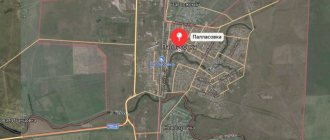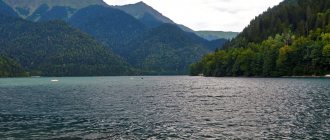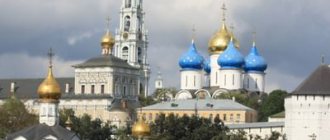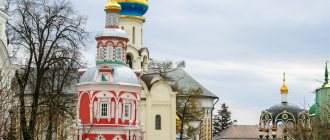The Bryansk region is located on the border with Ukraine and Belarus and is included in the Central Federal District. The total population for 2022 is 1 million 200 thousand. Density - 34 people per 1 m². As of 2022, the number of urban residents has reached 70%. There is no downward trend yet.
The list of the population by nationality is divided into:
• Russians - their dominant majority, according to the 2010 census - 96.7%; • Ukrainians - 1.1%; • Belarusians - 0.4%; • Armenians - 0.4%.
Representatives of all other nationalities are slightly more than 1%. No interethnic or interfaith conflicts were recorded. In terms of worldview, atheists, agnostics and Orthodox Christians dominate.
Bryansk is the largest regional city
The number of residents of Bryansk is, according to data for 2022, 405 thousand. It is one of the oldest settlements in the region, first mentioned in written sources back in 1146. The number of residents has decreased in recent years, although a positive trend is still observed periodically: in 2010 and 2017. there was an increase.
Bryansk attracts specialists in the field of industry, primarily in the field of metal processing. It is a large industrial city, thanks to which the economic situation here is favorable. This settlement is the most important railway junction in the economic direction. It is connected by routes to Moscow, Orel, Gomel, Vyazma, as well as other major locations. This is attractive to potential migrants, as it greatly facilitates the eventual relocation.
Transport node
Located at the intersection of strategic routes from east to west and 350 kilometers from Moscow, Bryansk, where a large railway interchange is located, plays a vital role in the life of the western regions. It is through it that the roads to Moscow and Smolensk, Orel and Vyazma, Ukraine and Belarus go. A daytime high-speed train to Moscow has been launched, which allows you to get to the capital in a few hours. There are 3 railway stations in the city.
In addition, Bryansk is a junction of federal highways: Moscow - Kyiv (M3), Bryansk - Kobrin (M13), Orel - Rudnya (A141). The city has a large bus station and a suburban bus station. An international airport is located 14 kilometers from Bryansk.
Klintsy is the second largest city in terms of population
This city is the second most populous in the region. As of 2022, almost 63 thousand people lived in it; together with the suburbs, the total number reached 70 thousand. The largest factory in Russia for the production of truck cranes is located here. Other industrial areas are also well developed, so Klintsy shows a steady trend of development. Thanks to this, the population has also been constantly growing in recent years. By nationality, the majority of people here are Russians.
Industrial centre
Post-war Bryansk had to be rebuilt. Housing, hospitals, schools, kindergartens, palaces of culture, libraries, and cinemas were built. The city became the largest industrial center of the USSR. Metalworking, mechanical engineering, electrical, electronic, chemical, woodworking and food enterprises were mainly concentrated here.
Today, Bryansk, where more than 1,200 industrial enterprises are located and operate, is the industrial center of the country, producing diesel locomotives, cars, road equipment, including asphalt pavers, graders, agricultural machines, construction materials, textiles and food products.
Novozybkov is large by local standards
Novozybkov ranks third in terms of population in the region. As of 2022, about 40 thousand people live here. This settlement is attractive for its unusual history. It was founded in 1701, mainly Old Believers were located here.
Gradually the city grew and acquired the status of a district town. The cultural context as a place of peculiar exiles and dissidents remained. In modern history, this is emphasized by the fact that the surrounding areas were exposed to radioactive contamination as a result of the accident at the Chernobyl nuclear power plant. The exclusion zone begins 1 km west of the city.
Where is Bryansk?
The Central Russian Upland, in the west of which the city of Bryansk is located, has a length of about 1000 kilometers, a width of 500 kilometers and is the watershed of three seas: the Black, Caspian and Azov. The altitude ranges from 200 to 250 meters. The highest point is 305 meters.
The city of Bryansk lies on the banks of the Desna River, where the Snezhet and Bolva rivers flow into it. The flat and low-lying left bank and the ravine and hilly right bank determine the structure of the city.
In these places there are the famous dense Bryansk forests, which mostly consist of broad-leaved trees. On the slopes of ravines and ravines grow forests consisting mainly of oak, linden and ash trees. The forest is the pride and calling card of Bryansk.
Dyatkovo is a village with city status
This village has been known since 1626. City status was received already in 1924. At the moment, the total number of residents is about 26.7 thousand. At the same time, the trend is negative, which is primarily due to the lack of places for employment and weak prospects. The majority of the population (98%) are Russians.
The main city-forming enterprise is the Dyatkovo Crystal Factory. Its products are widely known not only in Russia, but also abroad. Thanks to this plant, it was possible to erect a unique temple, the Burning Bush, where the only crystal iconostasis in the world was installed. The point is also widely known for its sources. In recent years, natural and architectural attractions have begun to be revived, and interest in the original crystal museum has increased. All this creates good potential for the development of the tourism industry.
Brief history
Bryansk city has its historical beginnings with 10
century, when a military fortress was built, which turned into one of the most important spiritual and cultural centers in the Southwestern part of Rus'. The ruins of the structure have not survived to this day. During the reign of Peter the Great, the city served as a transshipment base where the Azov campaigns were organized.
Centuries later, when the difficult period of the Second World War began, partisan detachments made plans against the German occupiers in the forests of the Bryansk region.
Starodub - ancient and small in number
Today the number of people living in Starodub (as of 2018) is 18 thousand people. This is an ancient city, the exact date of its foundation is unknown. It has been established that in 1080 we were already talking about a fairly powerful settlement. In the past it was the center of the Seversk land. The property of this place is the layout that has been preserved since ancient times, which makes it easy to reconstruct ancient settlements.
The city-forming enterprises belong to the food industry. Starodubsky cheese and canned food are produced here. Previously, bread and local sausages were produced here. At the moment, both companies have gone bankrupt. The city's greatest potential is related to tourism, but for this it needs to be developed.
Formation of the Bryansk Principality
The Principality of Chernigov included the lands where the city of Bryansk was located. As a result of the Tatar-Mongol invasion, the cities of Chernigov and Novgorod Siversky were plundered and destroyed. In 1246, the center of the Chernigov principality moved to Bryansk. The first Bryansk prince Roman Mikhailovich ruled here.
But the existence of the principality was short-lived, since the son of Prince Roman, Oleg, abdicated the throne and took monastic vows. In the absence of other contenders, the Chernigov and Bryansk principalities passed into the power of Smolensk.
Karachev is an ancient city with a small population
Karachev is a point in the Bryansk region, in which, according to last year, 17.7 thousand people lived. It is one of the oldest in Russia. Surprisingly, in 1146 it already existed. At that time it was the center of the Karachev principality. Now Karachev is in outright decline. There are several factories operating in the village, including those producing electrical parts, but most are in a state of outright decline. Nothing concrete is known about the possibility of restoring the city through tourism.
Popular message topics
- The work of Mikhail Lermontov
Mikhail Yuryevich Lermontov is a great writer and artist, whose importance for Russian and world culture is difficult to overestimate. Lermontov's creativity combines different themes that meet the current needs of the Russian - Darwin Charles
Charles Darwin is one of the greatest Britons in human history and one of the greatest scientists of all time. He developed a theory that fundamentally influenced the worldview of all people, and no matter how much creationists claim, - Deciduous Trees
Deciduous trees consist of a root, trunk, crown and leaves. There are small-leaved and broad-leaved trees. The most common deciduous trees: alder, chestnut, linden, poplar, birch, maple, ash, oak, apple, hazel,
PageFigures
BRYANSK is one of the largest industrial and cultural centers of the country. It has about 460 thousand inhabitants. Their average age is 83 years. More than 7 thousand people are born every year.
There are four districts in BRYANSK - Sovetsky, Bezhitsky, Fokinsky and Volodarsky.
The CITY party organization unites 575 primary party organizations, in which more than 41 thousand communists are registered; the city Komsomol organization numbers more than 80 thousand people.
THE CITY has 80 industrial enterprises. They produce products worth approximately two billion rubles per year. Now Bryansk produces eleven times more industrial products than in 1940.
Bryansk ENTERPRISES produce high-power marine diesel engines, diesel locomotives, refrigerated sections, irrigation and road machines, motor graders, grain dryers, fabrics, shoes, phosphate rock, steel, brick, rye malt, furniture, paper, pianos, food products.
PRODUCTS of Bryansk enterprises are sent to more than 25 countries around the world. Almost a fifth of the city's industrial products have been awarded the highest quality mark. For the development of production and international cooperation, the BMZ production association was awarded the Golden Mercury prize in 1980.
DURING the Eleventh Five-Year Plan, labor collectives of industrial enterprises in Bryansk built over 400 objects for various agricultural purposes in the village, 1,100 apartments for specialists of collective and state farms. Every year, assistance is provided in carrying out the Spring Field Revet, harvesting the crops, and providing materials, tools, and equipment.
Every year, city residents prepare more than 60 thousand tons of feed for public livestock, produce spare parts worth 2 million rubles, and repair 11 thousand units of agricultural equipment.
BRYANSK is a large railway junction providing transportation in seven directions. The annual volume of freight traffic is over 19 million ton-kilometers, and almost 30 million passengers are transported annually.
Urban passenger transport is CONSTANTLY developing. Bryantsev is served by buses and trolleybuses on 43 routes, including 28 bus and 15 trolleybus routes. 25 special flights were organized to the entrances of enterprises to transport workers and employees.
A LOT is being done in housing construction. During the years of the eleventh five-year plan alone, 760 thousand square meters of housing were commissioned in Bryansk. And the entire housing stock of the city is more than 6 million square meters.
2 PALACES, a House of Culture and a club in the city of Bryansk can simultaneously accommodate about 15 thousand visitors. In the regional center there are more than 200 libraries, 10 cinemas with almost five thousand seats.
About 60 thousand students study in 70 schools in the city.
In Bryansk there are institutes of transport engineering, technology, pedagogy, and agriculture.
About 35 thousand residents of the city have higher education.
Personnel for the national economy are TRAINED by 14 secondary specialized educational institutions and 15 SGPTU.
170 preschool institutions are open for the youngest residents of the city.
The number of seats in canteens, cafes, and restaurants in Bryansk reached 33.5 thousand people.
Household service ENTERPRISES provide 640 types of services to the city population
The provision of hospital beds has increased over the past year from 6,475 to 7,055, and the number of doctors has increased from 33.9 to 37.2 per ten thousand population. The city has 45 medical institutions, 103 paramedic health centers, 5 medical units, employing 1,300 doctors and 3,000 paramedical workers
MORE than 267 thousand people are depositors of city savings banks, the average deposit is 1149 rubles.
128 thousand THOUSAND residents of the regional center are constantly involved in physical education and sports. They have at their disposal 6 stadiums, 2 athletics arenas, 343 sports grounds, 25 children's and youth sports schools, 4 chess and checkers clubs, 1 ski jump.
PROVISION of the population of Bryansk with gas reached 91 percent, water supply - 86 percent, sewerage - 80 percent, which is higher than in the Russian Federation as a whole.
OUR regional center is one of the greenest cities. Each resident has an average of about 24 square meters of green space
There are about 10 thousand cars in personal use by city residents
Coat of arms
The coat of arms of Bryansk is presented in the form of a French shield. At the top there is a red field, at the bottom there is a green field. The latter depicts a golden mortar with pyramids of cannonballs on both sides of the weapon. The left one (just above the mortar) has six large charges, the right one (at the carriage level) has 10 small ones. There are 5 golden elements on the green field. They symbolize plant shoots, rebirth and prosperity.
The ratio of the top of the shield to the bottom is 2:1. It is allowed to border the heraldry with a gold frame around the perimeter of the shield.
The coat of arms was approved on December 23, 2009 by Decision of the Bryansk City Council of People's Deputies No. 222.









